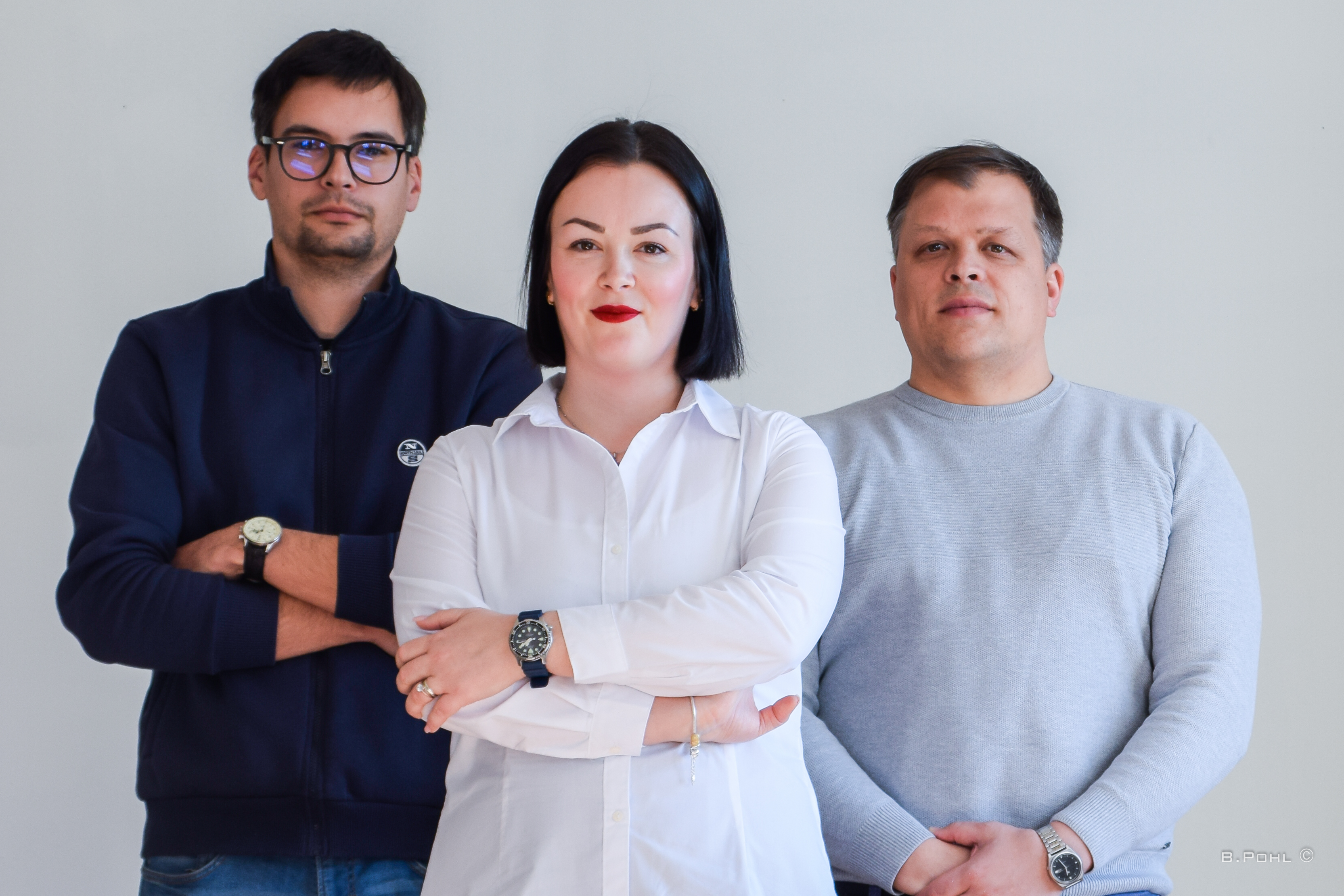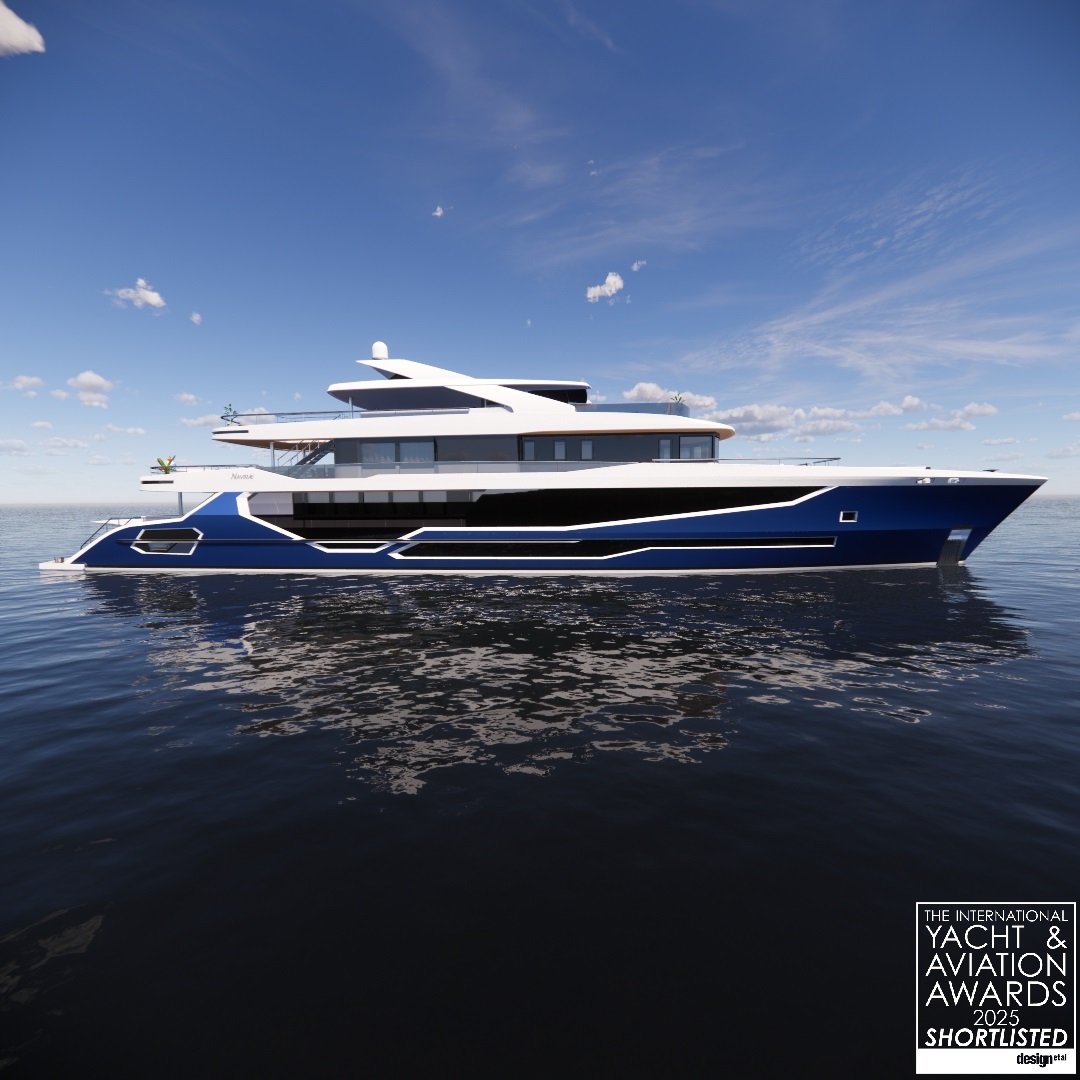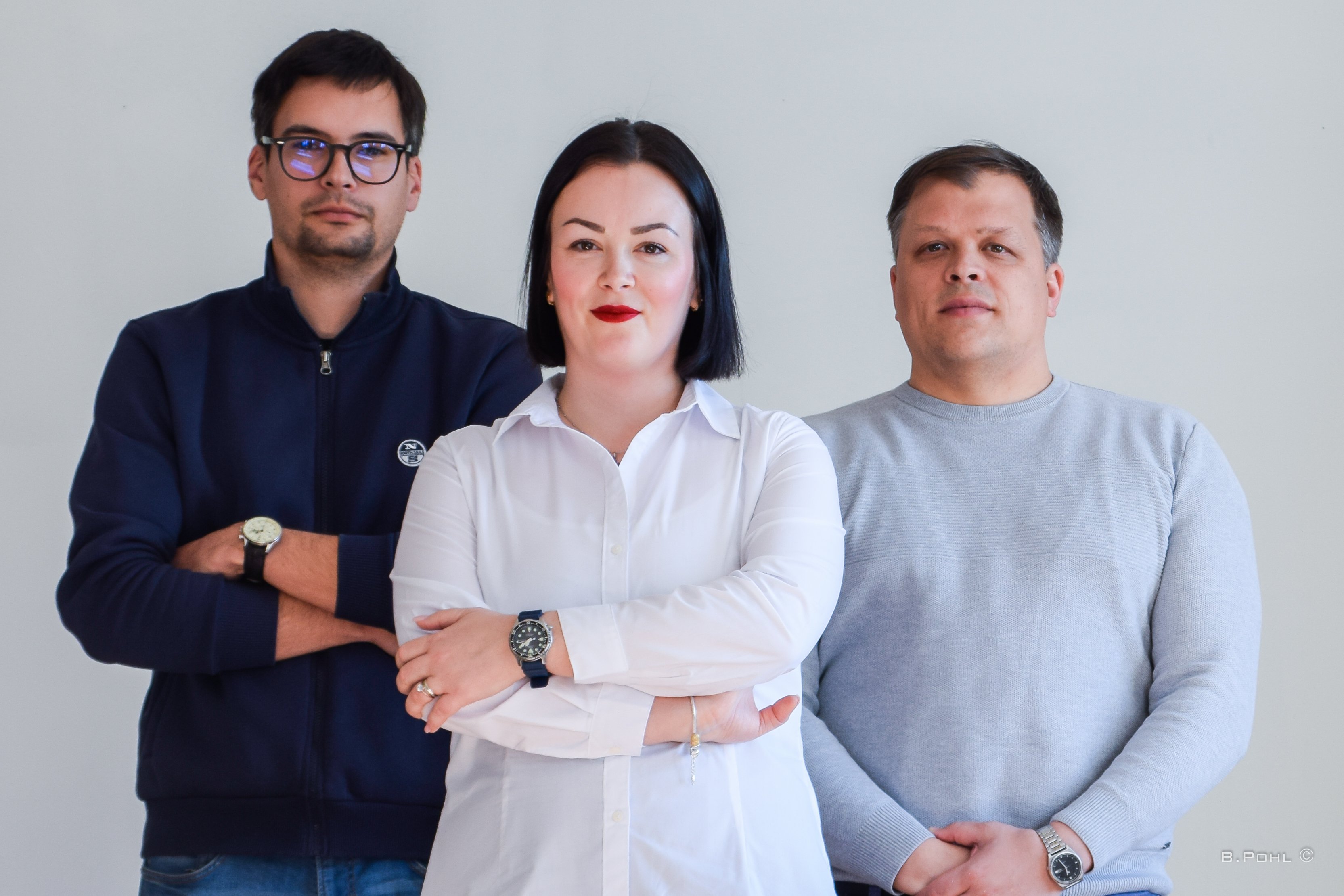We are immensely proud that AITAC's yacht design, Navirae, has been shortlisted for the prestigious International Yacht & Aviation Awards in the "Concept Over 40 Metres Award" category. This recognition is a testament to the power of teamwork, innovation, and our commitment to excellence.
Several engineers contributed to the design, and we bring you an interview with the team representatives who played the most significant roles in this project.
Nikolina Durbić Argentin has been with AITAC for over five years, working on various yacht and cruise ship interior projects. She is currently the functional head of the interior discipline. She arrived with a degree and internship in civil engineering but found her career calling in ship interiors.
Aleksandar Jančić joined AITAC in 2019. He currently works in the Outfitting department, with occasional short-term assignments in other departments, mainly in R&D.
Patrik Kubaska has been with AITAC for over a year and a half as an R&D engineer. His task is to quickly adapt to non-standard business inquiries, requiring a broad set of skills and capabilities. After high school, he applied to join the military to become a pilot. After a short time, he decided to study electrical engineering, ultimately completing a degree in naval architecture. After graduation, he first worked as a machining and automation technologist in the automotive industry. Now that he is finally in shipbuilding, he primarily focuses on 3D printing and design. Given his career path so far, he jokingly says, maybe he'll become an astronaut next...
What was your main inspiration for the Navirae design?
The design was determined based on the client's wishes, the yacht's size, and its intended use. We tried to align the yacht's functionality with its external appearance. I wanted the yacht to look more classic rather than like a spaceship. (A. Jančić)
Personally, I was primarily involved in creating visualizations and not so much in the design itself, but my focus was to make something that I find aesthetically pleasing. (P. Kubaska)
Can you explain the journey from the initial concept to the final design of the yacht?
The client was interested in a competitor's yacht, but the waiting period was too long, so they opted for alternative solutions.
My initial task was to develop crew quarters on the Lower Deck. That is where the hull is at its narrowest, meaning we had limited space to fit cabins, the crew kitchen and lounge, the laundry room, and more. The entire design had to comply with regulations set by the MLC (Maritime Labour Convention) and the Red Ensign Group Yacht Code. We also had a general plan from the competition for reference, which we quickly determined was technically unfeasible. After successfully delivering our work in a truly short timeframe, our tasks expanded to other decks, and we ultimately created a complete general plan for all decks. (N. Durbić Argentin)
Although this started as a project for a client, we simultaneously worked on our own yacht design, which we continued refining even after the project was completed. There were 4-5 different yacht variations before we arrived at the final look, which we then modified again just a day or two before submitting it to the competition. (P. Kubaska)
The whole process was chaotic and cyclical. We often had to go back to the beginning and start over. (A. Jančić)
How did you decide on the yacht's lines, colours, and materials?
It’s important to harmonize colours, materials, and lines. There’s no specific principle; we reached the final result through experimentation. (A. Jančić)
My goal was to create something that I personally liked. Since I’ve spent my whole life by the sea, I wanted to incorporate blue and white into the design to remind me of sea waves. (P. Kubaska)
What makes Navirae special compared to other yachts in the over 40m category?
It’s special because it has been technically developed in great detail. In the concept phase, we identified and solved potential problems that would typically arise only later in the project. We thought like engineers to make things easier for ourselves in case the project moved beyond the concept phase. (N. Durbić Argentin)
Navirae is designed to provide easy access to all parts of the yacht for people with mobility impairments. (A. Jančić)
In the over 40m category, most submitted concepts are not technically feasible, while our Navirae design is much more detailed and can actually be built. (P. Kubaska)
How long did the design process take, and what was the biggest challenge?
The entire process took about five months, with periods of intense work on both the design and the yacht's technical documentation. The biggest challenge, aside from deadlines, was the yacht owner’s requirement that the yacht be accessible for a person in a wheelchair. On yachts, meeting minimum corridor width requirements is always a challenge – either due to large luxury guest spaces or the need to accommodate all technical areas. Increasing the corridor width for wheelchair access from 600mm to 950mm added significant complexity to the design, but we successfully implemented it. (N. Durbić Argentin)
The yacht design evolved through five major versions. As the project developed, so did the design. The biggest challenge was designing the side decks and integrating the superstructure into the yacht's overall look. (A. Jančić)
For me, the biggest challenge was switching to a different visualization software in the middle of the project and having to adapt quickly while maintaining the same level of quality. (P. Kubaska)
How did you approach the challenges that arose during development?
I have to commend the team I worked with because every challenge that arose was quickly resolved. Communication and team energy were excellent, which made the entire process much easier. This was our first time working on a project like this, and we wanted to make the most of it. (N. Durbić Argentin)
All problems were solved as a team, which was the project's greatest strength. (A. Jančić)
What would winning this award mean for AITAC?
Winning this award would be a significant marketing boost for AITAC. It would reinforce our position in the market, proving that beyond engineering and consulting, we can also compete in yacht design. (N. Durbić Argentin)
It would be a major recognition for AITAC and strong marketing for the company. (A. Jančić)
It would help us enter the exclusive circle of yacht designers. (P. Kubaska)
What personally motivated you to participate in the Navirae project?
The challenge and uniqueness of the task motivated me, as I had never worked on anything like this before. (N. Durbić Argentin)
The main motivation was to present a yacht we could be proud of. (A. Jančić)
When I started working at AITAC, I realized I loved creating yacht renders. It’s a challenging field because most available tools are specialized for interior rendering rather than simulating large sea surfaces and yacht rendering. Comparing my first render from a year ago to what I do now motivates me to see how much further I can go. (P. Kubaska)
What did this project teach you as an engineer?
It significantly enriched my engineering knowledge, helping me acquire new skills while strengthening existing ones. (N. Durbić Argentin)
I am particularly proud that I calculated the anchor and equipment requirements – a detailed and complex process that was made easier with the help of colleagues. (A. Jančić)
I learned a lot about rendering. (P. Kubaska)
Do you have a favourite part or space on Navirae? If so, which one and why?
Definitely the Beach Room below the Main Deck. The space is below sea level and offers the feeling of an underwater sea cave. (A. Jančić)
The stern section. I think the yacht's lines are very well designed. (P. Kubaska)
Is there a detail on the yacht that you consider your personal "signature"?
All the sleeping and living quarters for the crew, officers, and captain are my personal touch. (N. Durbić Argentin)
Definitely the side glass walls on the Main Deck. (A. Jančić)
The blue colour – the yacht was originally white, and the day before submitting it to the competition, I decided to change the colours. (P. Kubaska)
If you could sail Navirae anywhere, where would you go first?
Antarctica. (A. Jančić)
I would first enjoy the Adriatic. (P. Kubaska)
Navirae should first sail through the Kvarner region. (N. Durbić Argentin)
Which famous person would you like to see enjoying Navirae?
I can’t think of a better answer than our director Marijan Lorencin enjoying Navirae. (N. Durbić Argentin)
Since I follow Formula 1, maybe Fernando Alonso. He got his Sunreef yacht last year – he could have ordered Navirae instead! (P. Kubaska)
Which project, besides Navirae, are you most proud of in your career?
I would highlight the reconstruction of my house, where I left my mark on the interior. I created the drawings and renders myself, and even some workshop drawings for the furniture. (N. Durbić Argentin)
The latest design we submitted for a competition because the renders look much more realistic – I hope it will be successful. (P. Kubaska)
Definitely the Electric Boat Concept. That project opened new doors for me and led to my involvement in the design of Navirae. (A. Jančić)
Congratulations to our engineers on this great achievement! We are proud of their work and wish Navirae the best possible success in this prestigious competition.


